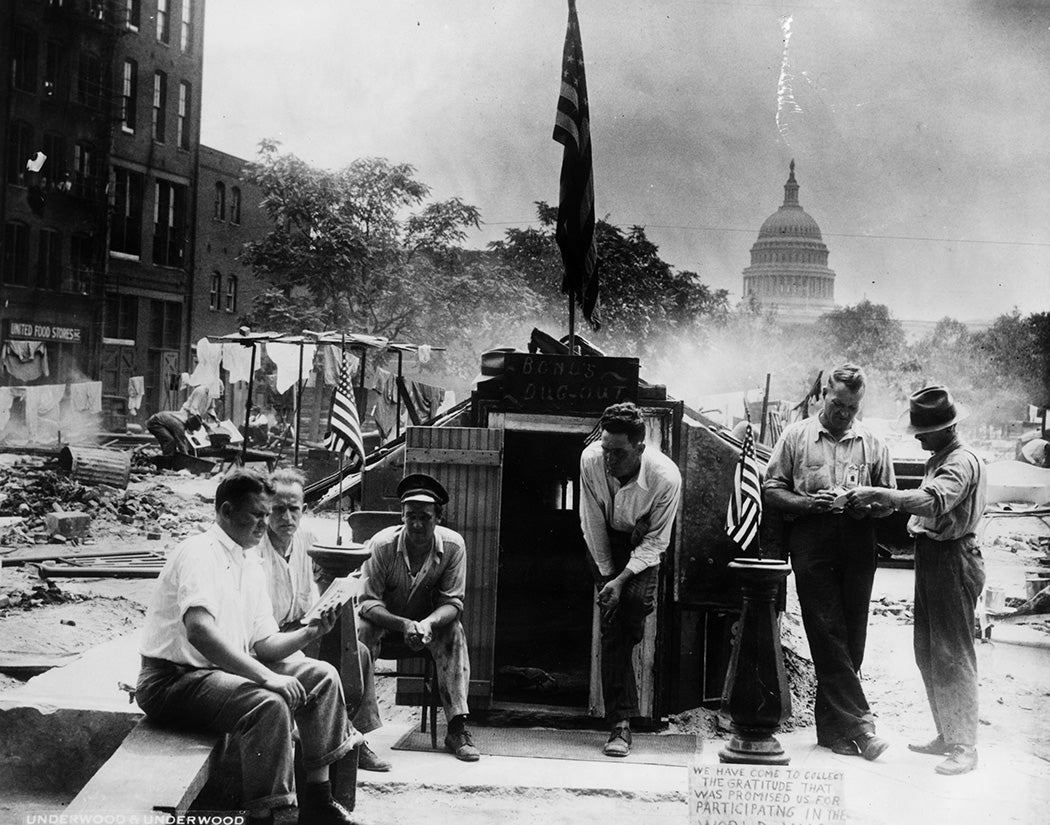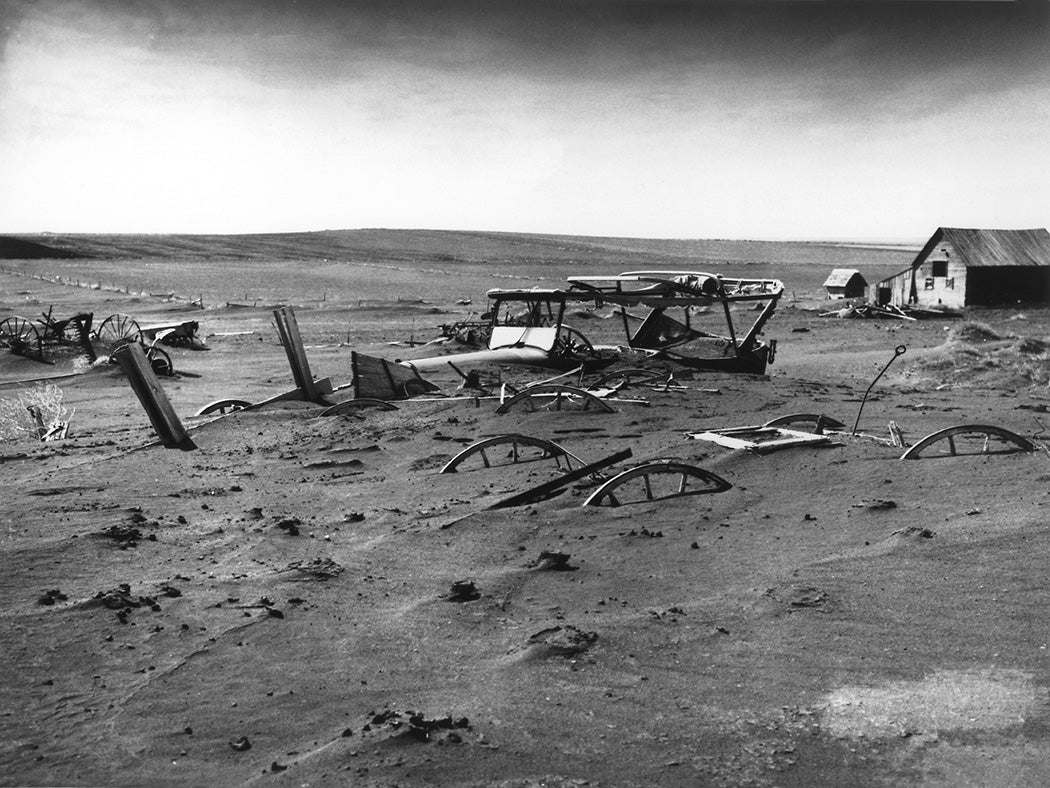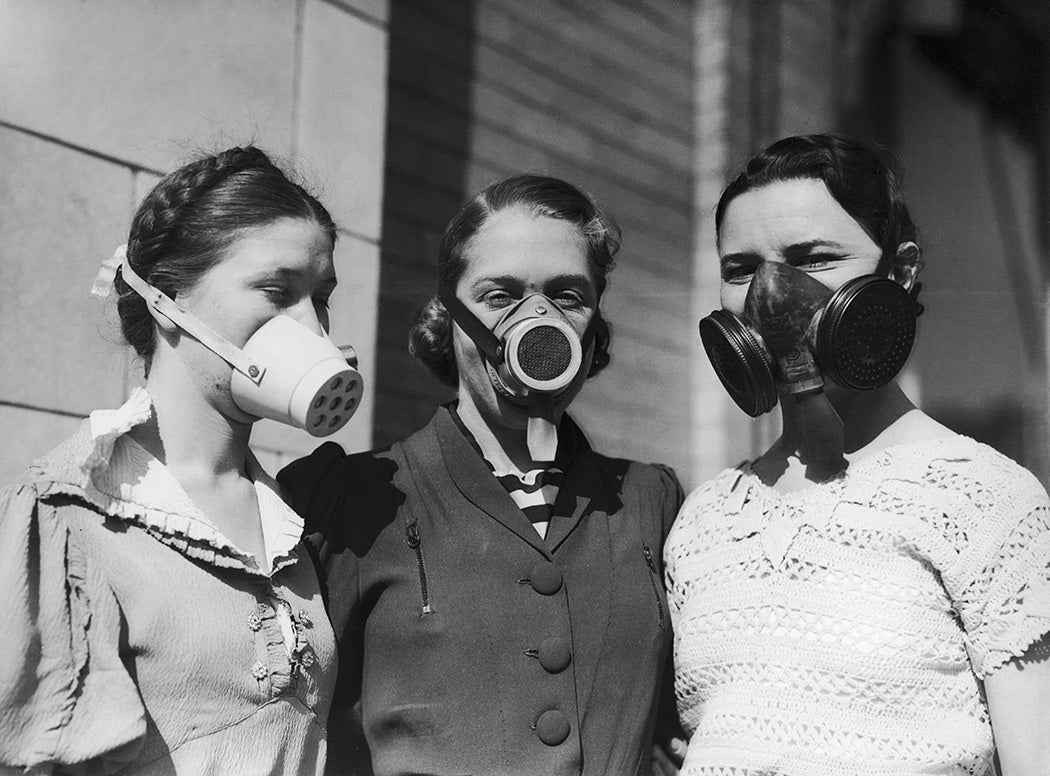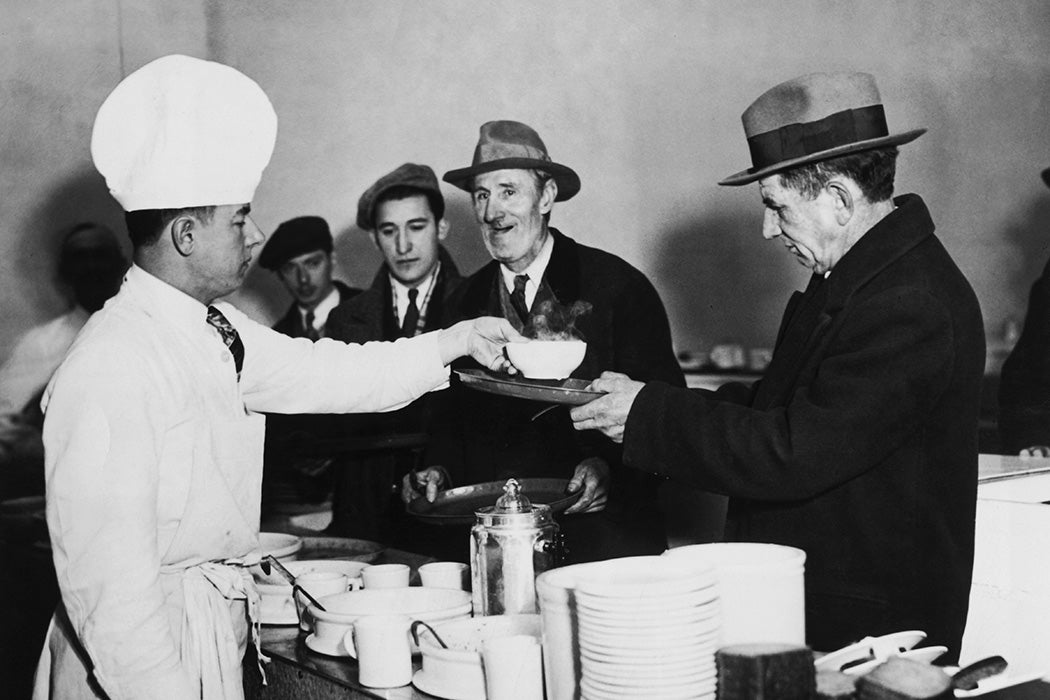Today’s soaring unemployment, small business failures, and uncertainty about the future are like nothing most of us have seen in our lifetimes. If there’s any useful historical parallel, it might be the Great Depression.
Like the coronavirus-driven economic crash, the Depression devastated a nation where things were already awful for a lot of people. In the 1920s, business owners pretty much did whatever they wanted. The rich got obscenely richer. Progressive, pro-worker policies had little place in national politics. The crisis changed everything. By the end of the 1930s, the country’s unions were stronger than they’d ever been and Congress had passed huge, unprecedented economic policies. The notion that the federal government didn’t have a central place in securing middle-class wellbeing was relegated to the political fringes. But how, exactly did that transformation happen? How did the economic suffering of the 1930s birth a new political and economic era?
Weekly Newsletter
“People often look at the Great Depression [and think], ‘Oh, it’s obvious that shattered everything and something new had to happen,’” Elisabeth Clemens, a sociologist at the University of Chicago who studies social movements, told me over the phone. “That overlooks all the work that had to be done to convince people that there actually was a crisis.”
In a 2015 paper for Social Science History, Clemens noted that many regular people were suffering depression-like conditions well before the stock market crash of 1929. Drought devastated small farmers. Urban workers faced frequent bouts of unemployment with inadequate help from municipal relief agencies and private charity. After the crash, it wasn’t at all obvious how much worse things would get—or how much the wealthy and powerful should care. Unemployment didn’t hit its high point, 24.9 percent, until 1933. Clemens writes that President Herbert Hoover responded to the crisis with the tools at his disposal—largely rallying private and local response efforts—and that it was not immediately clear that it wouldn’t be enough.
This spring’s plunge in employment has been a different story. Unlike the long stretch of droughts that gradually led to the ruined farms of the Dust Bowl, the coronavirus hit fast and hard. By mid-April, the official unemployment rate was already over 14 percent—and that’s probably an underestimate. Rather than a financial crash, the job losses today reflect deliberate choices by individuals, business, and governments to dial down commercial activity. But the results look remarkably similar: shuttered businesses, families too worried about the future to make big purchases, long lines at food banks. Clemens said that there are also parallel questions now about whether the situation demands a version of conventional political responses or something genuinely new.
“There’s going to be an ongoing struggle over how to just describe what we’re going through,” she said. “The stakes in the characterization of the crisis are really high.”
* * *
Nineteen thirty-two presidential candidate Franklin D. Roosevelt was among those who treated the early 30s as an essentially normal time.
“A lot of Roosevelt’s campaign in ’32 is ‘I’m not Herbert Hoover,’” said Erik Loomis, a labor historian at the University of Rhode Island. “It’s not policy-driven, not about organizing the masses.” In fact, Loomis told me, if FDR had been a left-wing figure, he couldn’t possibly have won the nomination of the 1932 Democratic Party, which, like the Republican Party, was deeply beholden to big corporations.

Actually, the most powerful force working for fundamental change in the early 1930s was probably the Communist Party. It was a group that represented a tiny portion of the U.S. public, but it was highly organized and savvy. In 1929, it went to work organizing the jobless, eventually forming local Unemployed Councils around the country. Writing in the American Political Science Review in 1989, historian Michael Goldfield describes massive communist-led demonstrations, including a national day of action that brought more than a million people out on the streets, in March of 1930. Goldfield writes that local councils fought evictions and demanded relief in militant local actions:
In one incident in 1931, five hundred people in a Chicago southside African-American neighborhood brought back furniture to the home of a recently evicted widow. The police returned, opened fire, and three people lay dead. The coffins were viewed… under an enormous portrait of Lenin. The funeral procession with 60 thousand participants and 50 thousand cheering onlookers was led by workers carrying communist banners.
The communists’ devotion to their cause, and their unusual willingness to organize multiracial coalitions, helped the councils gain power.
But, as the sociologist Steve Valocchi explained in a 1993 paper for Sociological Forum, councils were most successful when they evaded the top-down control of the Communist Party, instead drawing on local strengths. In Pennsylvania coal country, that meant recruiting leaders from the region’s strong Polish community. In Harlem, it meant drawing on the cooperative traditions of black churches and community organizations. The Unemployed Councils succeeded in winning more relief funds from local cities and counties. They also changed the perspective of the unemployed workers themselves. Valocchi quotes Dorothy Healey, a Communist Party organizer:
At the start of the depression many of the unemployed blamed themselves for having lost their jobs, thinking it was all their fault. Watching the changes in consciousness that took place over the next few years taught me lessons I never forgot, as we moved from agitation to organization and began to form neighborhood based unemployment councils.
Valocchi writes that the unemployed movement created pressure that helped Roosevelt and his Congressional allies pass the 1933 Federal Emergency Relief Act, sending money to states for their relief efforts.
In 1934, a new wave of organizing ramped up pressure on employers and governments. Workers across the country staged strikes. Longshore workers in San Francisco and Teamsters in Minnesota led two of the few general strikes in U.S. history. In Toledo, unemployed workers came to the aid of striking auto workers and clashed with bayonet-wielding National Guardsmen. The dramatic clashes caught the imagination of workers across the country. By the end of the year, more than 600,000 workers had formed unions, a jump of 20 percent.
Goldfield writes that the labor rebellion shook lawmakers and gave new ammunition to those who wanted to pass reforms. In the 1935 debate over the National Labor Relation Act (NLRA), which created a legal framework for union organizing and strikes, legislators declared the current situation unsustainable. “Unless this Wagner-Connery dispute bill is passed we are going to have an epidemic of strikes that has never before been witnessed in this country,” one Ohio congressman warned.
* * *
Pressure from organized workers may have forced politicians to do something, but that in no way meant that unions or Unemployed Councils—let alone the Communist Party—really got what they wanted. As Jeff Manza wrote for the Annual Review of Sociology in 2000, Congress didn’t pass the 30-hour work week that the American Federation of Labor wanted. It did pass a minimum wage, which labor largely opposed. And, in writing the NLRA—the law that would shape labor’s legal rights for decades—lawmakers barely consulted labor leaders.

Instead, the shape of major New Deal programs—including public hiring through the Works Progress Administration, Social Security’s old age and unemployment insurance, the NLRA, and progressive taxes—largely followed ideas that had been brewing on the liberal side of mainstream political conversations for decades. To many policymakers, relief for workers was a way of supporting capitalism. It powered the economy by encouraging consumer spending.
“When those measures are passed in the ‘30s, the left considers them all sell-out measures,” Loomis said. “FDR is heavily criticized on the left.”
* * *
One notable failure of the New Deal was its racism. Despite the huge role that black workers played in the radical movements that helped make them possible, many scholars believe that many of the era’s programs were crafted to exclude them. Roosevelt and New Deal advocates in Congress struck deals with white Southern Democrats to get their bills passed. For example, the Social Security Act of 1935 barred domestic and agricultural workers—a large portion of the African-American workforce—from unemployment and old-age benefits.
Still, even the unequal benefits were enough to sway many black voters to the Democratic Party—especially since the party of Lincoln had long since stopped taking them seriously as a constituency. Other working-class voters also moved toward the Democrats. The party widened its majority in Congress in 1934—a rarity for a midterm election. And in 1936, FDR won reelection in one of the most lopsided votes in U.S. history, carrying 46 out of 48 states. Despite setbacks politically and economically over the next few years, a new political landscape had been created. Union membership continued to rise dramatically, producing a national politics that—during and after World War II—centered the needs of working people.
“The idea that the federal government would be providing emergency relief and emergency work was extraordinary,” Clemens said. “And people liked it.”
This spring, workers have staged spontaneous strikes at hundreds of workplaces: Amazon warehouses, meatpacking plants, and other workplaces where employees are getting sick and dying. The crisis has made historically devalued work, from child care to stocking grocery shelves, more visible to the middle and upper classes. In wonky progressive circles, there’s endless talk of the ways we could rebound from this crisis with a more equitable, ecologically sustainable economy—a job guarantee, local food systems, a permanent universal basic income, and much more. Clemens noted that one obvious way the crisis might change the political consensus is by plunging formerly secure workers into precarious situations. Already, many have lost employer-sponsored health insurance or been forced to deal with dysfunctional unemployment insurance systems.

“There is, I think, a moment where because it’s happening fast and because it’s happening to everyone all at once, some of these things become more visible and less taken for granted in a striking way,” Clemens said. “I think the question will be, can all of that be stuffed back in an argument about ‘return to normal?’”
Clemens and Loomis said progressives are better positioned to argue for something beyond “normal” than they were in the last economic crisis, which began more than a decade ago with the mortgage lending crisis of 2008. Between now and then, new ideas have drifted toward the mainstream. The Occupy Wall Street protests of 2011 brought economic inequality into mainstream conversations. Black Lives Matter, the Fight for $15, and resistance to President Trump’s policies on immigrants have built new frameworks for political work. But, Loomis said, racism remains an enormous stumbling block when it comes to building these policies—or even supporting and protecting workers in the current crisis.
“It’s absolutely my belief that if it wasn’t for the fact that you have higher rates of COVID among people of color—if it was white people that were suffering at that rate—you would not have this right-wing push to reopen the economy,” Loomis said.
He added that progressive economic movements are unlikely to succeed without taking on explicitly anti-racist work.
“It’s the single most important issue,” he said. “It’s something that I think even the left struggles to admit because it forces them to talk about the white working class in a way that does not fit with the kind of narrative that there’s all these people that are just waiting to be organized cross-racially.”
Right now, both Clemens and Loomis said, it’s simply hard to see what this crisis will bring. Maybe we will eventually return to “normal.” Maybe suffering will keep ratcheting up for many people, with no adequate response in sight. Or, perhaps, we’ll shift toward something better.
“We’re not in 1934 right now, we’re in 1929, 1930,” Loomis said. “What people are doing now in these very nascent moments may be laying the groundwork for things that are coming in a series of years.”







